When you think about soccer’s superstars, it’s usually the flashy moves and goal-scoring that come to mind.
You might picture Lionel Messi creating magic with his passes, Cristiano Ronaldo powering through the field, or Erling Haaland making scoring seem easy.
Yet, it’s crucial to remember that these moments of glory wouldn’t be possible without a strong defense anchoring the team.
At the heart of this defense is the center-back, who ensures that a team’s success isn’t just about how many goals they score but also how few they let in.
They’re the backbone that allows the stars to shine, proving that a winning team is built on a foundation of solid defense as much as on its ability to attack.
What is the Center-Back in Soccer?
Arguably, no position is more important on a soccer field than the center-back, the metaphorical backbone of a team.
As the name implies, center-backs are the defenders positioned at the heart of the backline, tasked with some of the most challenging defensive duties. Depending on the team’s formation, there could be one to three center-backs on the field.
Their primary role is to act as the final barrier between the opposing team’s attackers and the goalkeeper. They’re responsible for making crucial, yet often overlooked, plays that can turn the tide of a game.
What are Center-Back Key Attributes?
There are many hallmarks of a great center-back that differentiate the best ones from the average.
Tackling
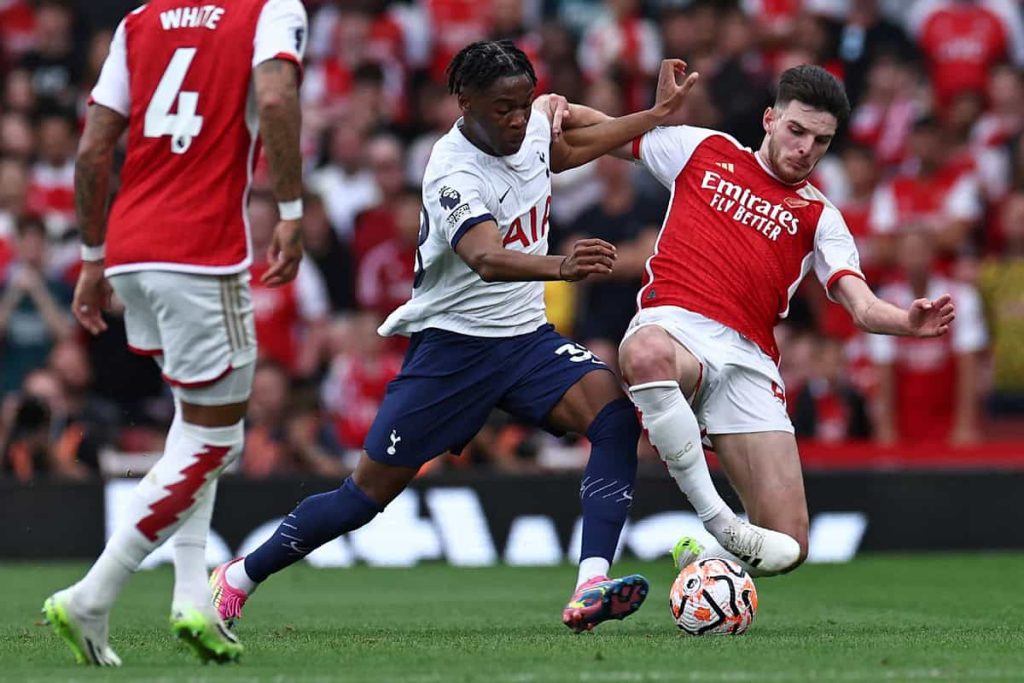
The easiest way to spot it is to watch the defense and notice who is tackling. Although the goalie needs to be a strong communicator, the center-back needs to be the leader on the field.
They are the ones who organize the defense and make sure everyone is in sync. They are the ones who call out different movements on set pieces to make sure everyone is marked.
They are the ones who are talking with the midfield about how much time and space they have on them. You will have a strong team when one of your two most important leaders is your center-back.
Positioning
At the top of the list of physical attributes for a strong center-back is their positioning because, ultimately, they patrolled the most dangerous areas on the field for opponents.
Positioning is less about where the center-back is physically and more about the tactics and strategy. It’s knowing where your opponents are and where the rest of your defenders are on the field.
It’s about knowing when to push up and potentially trap your opponent offsides and when to stay back and make sure the other team can’t play the ball over you.
Yes, you need to be in the correct place on the field, but without the other information, your location is meaningless.
Marking
Alongside positioning, a great center-back needs to be able to defend one-on-one properly. Whether it’s a free kick or a corner kick from the opposition, every defender is marking one man, and the center-backs are the ones dealing with the other team’s best-attacking threat.
A great marker is someone who can adjust on the fly and follow their man wherever he goes in a crowded area. They eliminate their opponent as an attack option by ensuring they have no space to generate that attack.
Strength
So, now you’re in the right spot, and the attackers are approaching you; what skill do you need?
The answer, of course, is a strong tackle, and center-backs have the most difficult tackling assignments among defenders in soccer.
As the last line of defense, when the center-backs tackle an opponent, they must be timely and precise, throwing their foot through the ball at exactly the right angle without hitting the opponent.
This is especially important if they’re chasing the play and having to hustle back to prevent an opponent from scoring.
The elite center-back soccer players are the ones who disrupt plays without fouling, while the other ones can often give up penalty kicks instead.
Aerial Ability
In soccer, the skill set required for center-backs goes beyond traditional defense, especially during game restarts like free kicks, corner kicks, or throw-ins, where tackling isn’t feasible.
They must excel in aerial battles, timing jumps perfectly to counter attackers and deflect the ball from harm.
Their positioning and ability to neutralize the offensive threat in the air truly define their worth on the field, embodying the critical role of a disruptor.
An often overlooked aspect of a great center-back’s arsenal is their passing ability.
Far from the basics of avoiding own goals or the slow build-up play, it’s about the visionary passes that split defenses, the cross-field balls that change the point of attack, and the calm under pressure to avoid turnovers in dangerous zones.
These passes are challenging to perfect but are crucial in setting a center-back apart and cementing their status in the starting lineup, highlighting their significant impact in both defending and launching attacks.
Speed and Acceleration
Of course, a great center-back is not just their soccer-specific skills but the physical and mental attributes that are important all over the field.
Among the most important physical needs of the soccer center-back position is strength and speed, two things that cannot be taught.
When you are defending the middle of the field, you need to be strong on your feet and be able to absorb a lot of contact while also dishing out plenty of it.
It’s the combination of standing your ground while also trying not so delicately to move someone else off their spot.
Yet, it’s just as important for a center-back to be quick on their feet and be able to move around the field as needed.
If that means chasing down an attacker who beat an outside defender, a center-back is going to make every effort to neutralize that play.
If it means quickly escaping the box to draw attackers offside, the center-back is going to be ready to move at a moment’s notice in tandem with the rest of the team.
The opposition can easily exploit a strong but slow center-back or a weak but quick center-back, so these two skills need to work in tandem.
Composure
Much of what makes a center-back exceptional happens in their mind, with composure setting the greats apart from the rest.
Observing the world’s best center-backs, you’ll notice their remarkable calmness and the ease with which they operate on the field.
While proficient passing and the ability to initiate attacks are essential, it’s their poise under pressure that truly stands out.
Watch them closely when the stakes are high, and you’ll see the seamless blend of mental and technical skills in action.
Passing
Passing is a crucial attribute for any center-back, intertwining mental sharpness with technical skill. The difference between good and great center-backs often lies in their composure.
Observing some of the best center-back players, you’ll see their tranquility and effortless control on the field, especially under pressure.
They’re not just defenders but pivotal playmakers, initiating attacks with precise passes from the back.
They remain composed and make smart, accurate passes, even in high-pressure situations, that truly set them apart. This blend of mental fortitude and passing prowess defines the key attributes of a top-tier center-back.
Decision-Making
Many teams in the modern era of soccer will leave an attacker or two to press the defense and force them to make quick decisions.
The great ones handle that stress and don’t look hurried as they survey the field and make the right pass. The average one can sometimes feel that pressure and make a bad pass or a bad decision, leading to an easy goal for the opposition.
There is a calmness that exudes from the best center-backs in the world that nothing is going to bother them while they are on the field. They are in control of themselves and the ball and never will panic.
Leadership and Communication
Composure must be met with excellent decision-making because there is no room for error as a defender. Every pass in your third of the field needs to be pinpoint and accurate, or you will allow your opponent to attack much easier.
How often have we seen a defender look calm on the ball but try to pass the ball to a teammate who doesn’t have the space to do anything with the ball?
Or a defender who, instead of using their space and time to build up an attack slowly, tries to rush it and loses possession with an ill-advised long ball?
These are plays that the best center-backs in the game rarely make because they understand what is happening on the field.
Best Current Center-Backs
This spotlight on the best current center-backs celebrates the masters of defense whose skills shine brightest when keeping the spotlight off themselves. Discover who stands out in this crucial role, guiding their teams to victory with every calculated move.
Ruben DIAS, Manchester City/Portugal
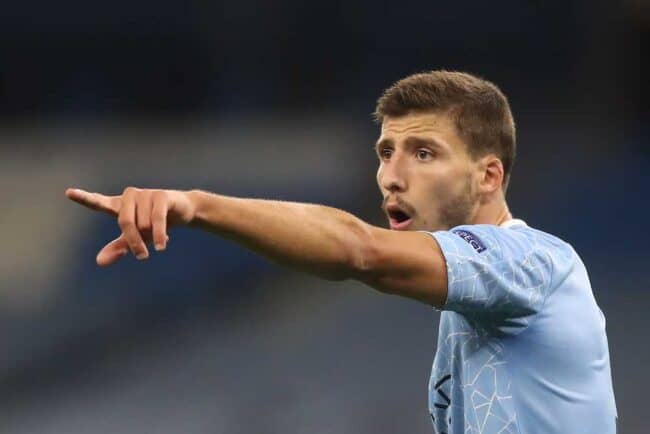
When Pep Guardiola and Jose Mourinho are singing your praises, you must be doing something right, and such is the case with Manchester City’s Ruben Dias.
A dynamic young center-back, Dias was a remarkable find for City and continues to blossom into a leader.
As Guardiola told the Portuguese press in 2021 after just acquiring Dias, “He’s a central defender who leads the defensive line and, in doing so, helps others to make good decisions – and that’s what happens when you become an incredible central defender.”
Dias has only improved in the three years since that quote and is an excellent example of the physical and mental qualities required to be a sensational center-back.
Josko GVARDIOL, Manchester City/Croatia
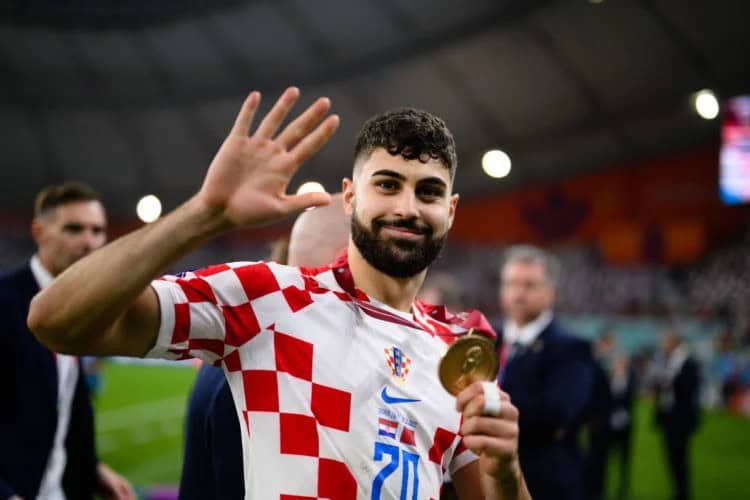
Staying in Manchester, we turn our attention to the versatile Josko Gvardiol, whose left foot makes him a sought-after defender.
Manchester City picked up the Croatian national from RB Leipzig last summer after a standout performance in the 2022 World Cup as Croatia finished third.
A Sky Sports reporter in Germany wrote of Gvardiol, “His pass accuracy, his passing speed is outstanding.
Risky passes and dribbling through the first pressing line… Line-break passes are one of his best abilities. I’ve never seen this at this age at this level.”
Many of those around Gvardiol call him the prototype of a future center-back with his abilities to push forward into attack and pick out the correct passes.
For those who want to see how the game is developing, there are few better options than studying this young Croatian.
David ALABA, Real Madrid/Austria
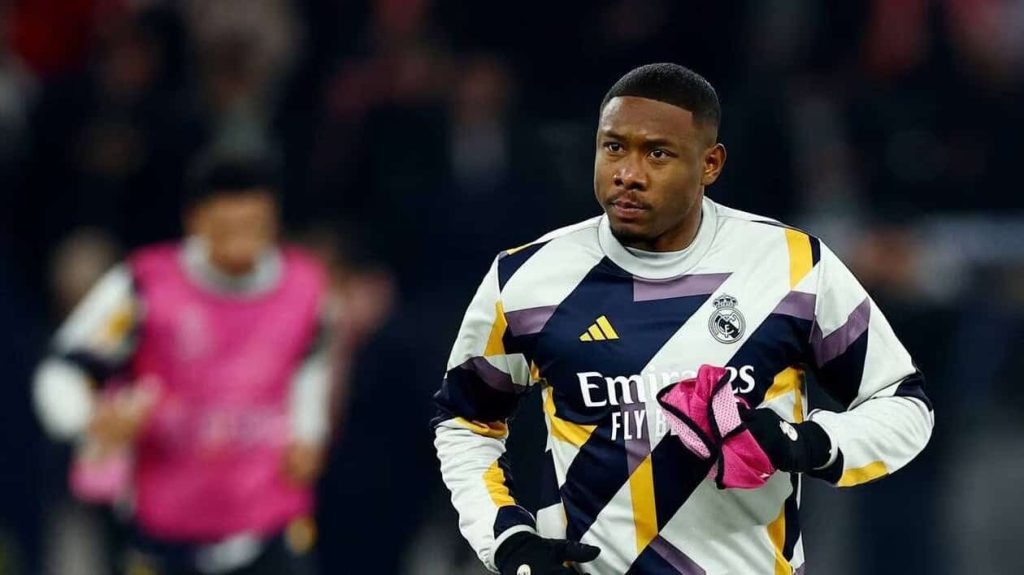
David Alaba is a great example of how skills and maturity can overcome a lack of physical attributes.
The Austrian is not the fastest nor tallest member of the squad, but he is elusive and dynamic with the ball at his feet.
He has played several positions for Real Madrid and Austria over the years, mostly because his offensive capabilities are unquestioned.
Alaba is also such a force defensively because of how well he understands the game and how he uses that knowledge to find himself in the right spot most of the time.
When you watch Alaba play, it is important to recognize how easily he can move into the attack and be a weapon for his team on both sides of the field.
Eder MILITAO, Real Madrid/Brazil
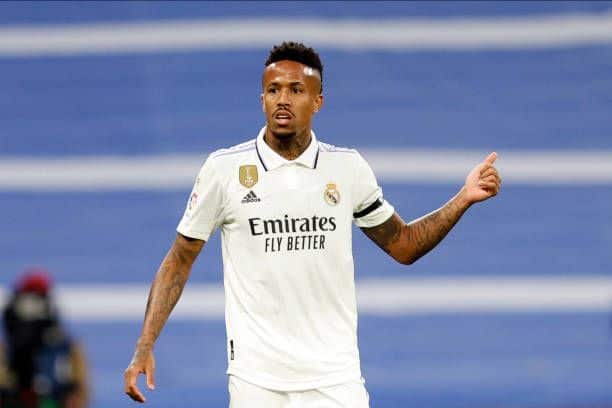
If you are looking for a defensive center-back, Eder Militao is your man once he recovers from a torn ACL. The Real Madrid center-back is known for how well he plays inside his penalty area, especially when it comes to defending in the air.
Unlike some of the other center-backs on this list, Militao isn’t the best at moving the ball forward or being an offensive asset, but everyone needs a shutdown center-back as well.
He matches up well against the best strikers in the world and consistently makes big tackles on the back line for Madrid.
The Brazilian is a great example for those wanting to improve their defensive acumen and skills.
William SALIBA, Arsenal/France
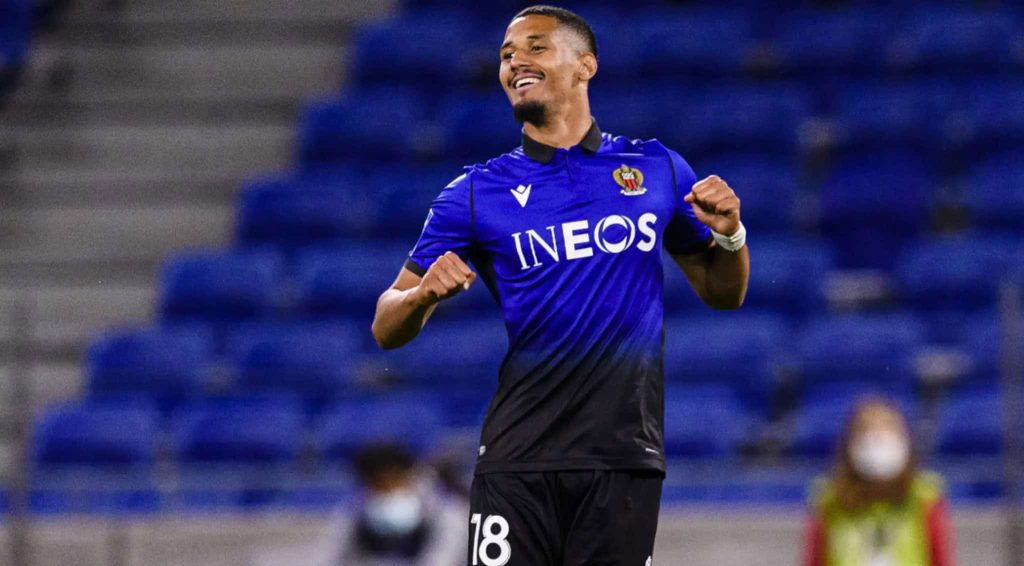
William Saliba is another complete package as a center-back for Arsenal, and his quality can be seen by watching the Gunners when he’s in and out of the lineup.
He is one of the best defenders in the world because he is equally strong on the ground and in the air.
But, he also has many of the modern qualities in the attack both with his passing and shooting abilities. When he is healthy and playing for Arsenal, it is no shortage of amazing to watch him play and learn from everything he does for the Gunners on the field.
Frequently Asked Questions
Is center-back the same as a defender?
A center-back is a type of defender, like a square, a type of rectangle. You may hear about four types of defenders during a soccer match, and it all depends on the formations being played.
A wingback is someone who plays on the outside of the back line and is often seen running up and down the field along the sideline, and is responsible for the parts of the field between the edge of the penalty box and the sidelines.
They may support the attack on the wing, but their main job is defending the wings in the defensive half.
You may also hear about a defensive midfielder or No. 6, who plays in front of the central defenders and mainly defends in the midfield, rarely being part of the attack.
The center-back is a general name given to a defender who plays in the center of the field. They are most likely responsible for the middle of the field, namely the penalty area, and helping the goalie prevent teams from getting shots off around the goal.
A specific type of center-back is a sweeper, who sits behind a typical central defender and is the ultimate last line of defense.
A sweeper is someone who “sweeps” up the attacks left by the defense and normally is also the communicator for the defense, directing everyone on the field.
How has the role of the central defender developed over the years?
The position of a center-back has evolved heavily over the past 30 years as the tactics in soccer have dramatically changed to a more high-paced, offense-first style.
When the center-back was first introduced, it came as part of a change in tactics to a back four where four defenders are aligned in the back of the formation.
The focus was far more on defense than offense, and the best center-backs were ferocious tacklers and strong defenders with strength and technical acumen rewarded.
As the game has developed, the central defenders are still important, but they are more valued when they are quick, smart in possession, and good with the ball at their feet.
Center-backs need to be able to play with the ball and be part of a fluid possession-based attack. It is less about quickly getting the ball to the midfielders to flow into the offense and more about making smart decisions with the ball to maintain possession.
What used to be a six- or seven-person attack now requires all 11 players to be strong passers and excellent dribblers.
Do center-backs need to be fast?
Speed is an important virtue for center-backs, but defenders must be fast in several ways. There is a need for straight-line speed so that center-backs can chase down attackers and quickly clear their areas to condense the space on the field.
But they also need to be mentally fast and understand where everyone is on the field and what the right play is to make.
There is also a need to make quick cuts and be able to stay with more agile and athletic attackers, which requires a different definition of being fast.
So, although center-backs need to be fast, they mostly need to be agile athletes who can make quick decisions and get to spots quickly.
Do center-backs have to be tall?
Although center-backs are not required to be tall, most are among the tallest in their respective clubs. If you look at the five center-backs we discussed earlier, their average listed height is 6-foot-1 (1.86 meters) with just one of them listed at below 6 feet tall (1.85 meters).
There are clear advantages to center-backs being tall, especially in terms of their abilities in the air, but some excellent center-backs aren’t six feet tall.
There are so many ways to make up for a lack of height that there is no reason to panic if you aren’t among the tallest players and want to be an elite center-back.
At what age do center-backs peak?
Center-backs are like every athlete, and they all peak at different times, depending upon their experience and other factors.
However, it is fair to say that most center-backs will peak between 25 and 28 like so many soccer players. If you look at the lists of the most valuable center-backs in the world right now, all but one listed in the top 20 is 27 years old or younger.
That being said, many analytics companies rank 32-year-old Virgil van Dijk as the best center-back in the English Premier League for the 2023-24 season, so greatness isn’t wasted on the youth.
As a safe rule of thumb, your performance will start to decline around 34 or 35 years old, but there is no guarantee that you will ever have a dip until you decide to hang up the boots.
Conclusion
Defenders in soccer are often underrated unless you know how vital center-backs are, showing that defense is much more than what shows up on the stat sheet.
While goalies often get the praise or blame, the true heart of a team’s defense lies with the center-backs.
They’re key in stopping attacks, not just through tackles, but with their sharp anticipation and being in the right spot at the right time. It’s these unseen skills that truly make a center-back stand out.
So, next time someone asks, “Is the center-back an important position in soccer?” you’ll have the insight to explain its importance confidently.

